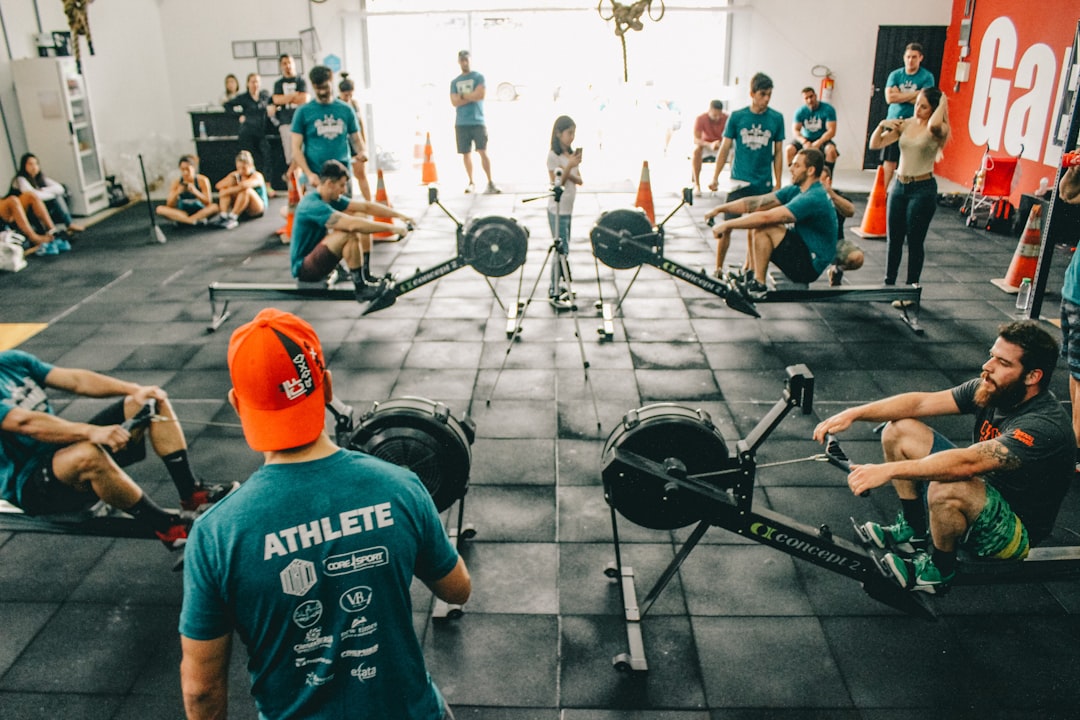


There are three types of muscle fiber and knowing the differences can help you select the type workout specific to your muscle type. That means results!
Type I (slow-twitch)
Type IIB (Classic fast-twitch)
Type IIA (Intermediate fast-twitch)
Type I fibers are characterized by low force/power/speed production with high endurance.
The slow-twitch muscle fibers are more efficient at using oxygen to generate more adenosine triphosphate (ATP) fuel for continuous, extended muscle contractions over a long time. They fire much slower than fast twitch fibers and can go for a long time before they fatigue
Use: Running or cycling long distances
Type IIB fibers are characterized by high force/power/speed production with low endurance.
Fast-twitch fibers use anaerobic metabolism to create fuel, making them better at generating short bursts of strength or speed . Because of this, they fatigue more quickly. Fast-twitch fibers usually produce the same amount of force per contraction as slow muscles, but they get their name because they are able to fire more rapidly.
Use: Lifting heavy weights or sprinting short distance.
Type IIA fibers fall in between type I and IIB fibers
These fast-twitch muscle fibers are also known as intermediate fast-twitch fibers. They use both aerobic and anaerobic metabolism almost equally to create energy. They are a combination of type I and type II muscle fibers.
Use: Doing Higher reps with moderate weights or sprinting the 400 meters.
Quick test to determine your predominant fiber type

First thing you need to know is you 1 rep max. To determine your one rep max for an isolation exercise (this is important) such as a dumbbell curl. Find the weight you can only do one rep with. if you perform this on a compound movement like a barbell press the test won't apply because there is too many assistant muscles involved.
Once you've figured out your one rep max, take a weight that is 80% of it (multiply your max weight by 0.8 to get this) and do as many reps as possible with it.
- If you can do only 4 to 7 reps with 80% of your 1 rep max, you have mostly type IIB fast-twitch fibers in that muscle.
- The ability to get approximately 10 reps with 80% of your 1 rep max is the typical type IIA fast-twitch fiber .
- If you can do 12 to 15 or more reps with 80% of your 1 rep max, your fiber make-up is probably mostly slow-twitch fibers.
Slow-Twitch Basics

Slow-twitch fibers are sometimes called red fibers because they contain more blood-carrying myoglobin, which creates a darker appearance.
Slow-twitch fibers contain mitochondria, and are considered aerobic.
Slow twitch fibers provide their own source of energy, and can sustain force for a long period of time, but this limits their ability to provide great force.
Slow-twitch fibers are are the first fiber type recruited when a muscle contracts. If they can’t get the job done, the fast-twitch muscle fibers are then engaged.
How to train slow-twitch fibers:
Isometric contractions with little-to-no joint movement.
Example exercises: The Plank or the Wall sits.
Resistance-training with lighter weights and slower movement with more than 15 reps.
Circuit training with little-to-no rest while using lighter weights.
Any high rep body-weight exercises are great for hitting the slow-twitch fiber.
Using shorter rest intervals say 30 seconds also targets more slow-twitch fiber.
Fast-Twitch Basics

Here are things to know about fast-twitch, or type II, muscle fibers:
Fast-twitch fibers have a high threshold and will be activated only when the slow-twitch fibers can't keep up with the challenge at hand.
The fast-twitch fibers reach peak force very quickly compared to slow-twitch fiber.
Fast-twitch fibers are called “white fibers” because do not contain much blood, which gives them a lighter appearance.
Fast-twitch fibers can generate more force, but are quicker to fatigue when compared to slow-twitch fibers.
Strength and power training can increase the number of fast-twitch muscle fibers recruited for a specific movement.
Fast-twitch fibers are responsible for the size and definition of a muscle.
How to train fast-twitch fibers:
Resistance training with heavy weight stimulates fast-twitch muscle fiber.
Performing explosive, power-based movements.
Lower reps with higher weights keep it between 3-9 reps for most effective activation of fast-twitch fiber.
Rest longer between sets say 60-90 seconds minimum.
The Conclusion:
Depending on the results from you 1 rep max test choose the type training that fits you predominant muscle type.
The average individual has close to a 50/50 balance of fiber types. For the power athlete, there’s a higher ratio of fast-twitch fibers (sprinters 70-75%), But the endurance athlete have more slow-twitch fibers (marathon/distance runners 70-80%).
This being said a well rounded fitness program that combines cardiovascular training along with resistance training is the best possible combination for health and fitness. This combination is the formula for being as fit as you can possibly be!





